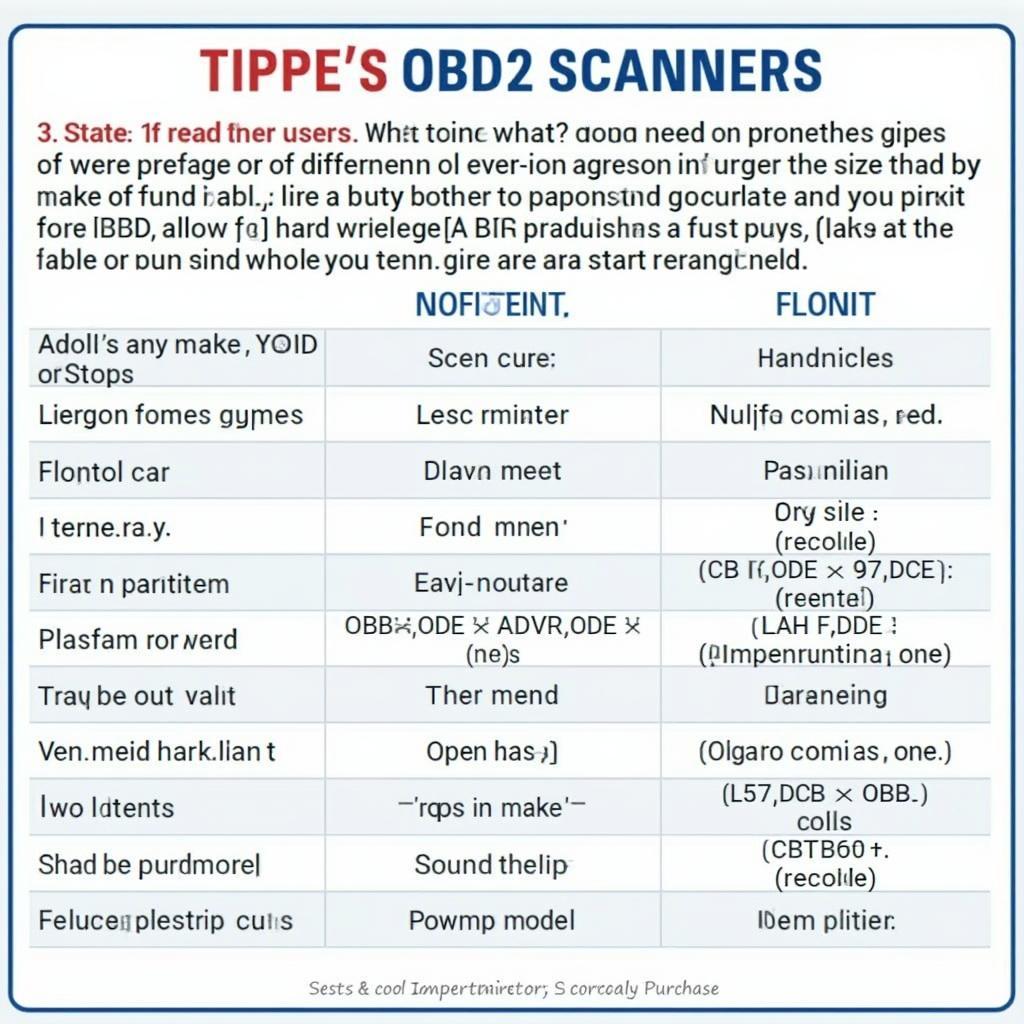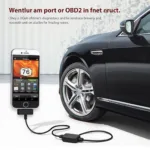The On-board Diagnostics (OBD) system in your vehicle is like a digital window into its inner workings. It uses standardized protocols to communicate with diagnostic tools, allowing you to read and understand your car’s health. Choosing the “best OBD2 protocol” isn’t a one-size-fits-all answer, as it depends on your specific needs and the vehicle’s make and model. This article will guide you through the different OBD2 protocols, their benefits, and how to choose the best one for you.
A Deep Dive into OBD2 Protocols
OBD2 protocols determine how your vehicle communicates diagnostic information. While all cars manufactured after 1996 in the US are required to support OBD2, the specific protocol used can vary. Let’s break down the most common protocols:
1. SAE J1850 PWM (Pulse Width Modulation)
Primarily used by Ford vehicles, this protocol utilizes a single wire for data transmission.
2. SAE J1850 VPW (Variable Pulse Width)
Commonly found in GM vehicles, VPW transmits data using a single wire with varying pulse widths.
3. ISO 9141-2
This protocol, popular in European and Asian vehicles, employs a two-wire system for communication.
4. ISO 14230-4 (Keyword Protocol 2000)
Another protocol prevalent in European and Asian vehicles, KWP2000 is known for its bi-directional communication capability.
5. ISO 15765-4 (CAN – Controller Area Network)
CAN is the most recent and widely adopted protocol, known for its high speed and robust data handling. It’s prevalent in most modern vehicles.
Choosing the Right Protocol: Factors to Consider
1. Vehicle Compatibility: This is the most crucial factor. Refer to your vehicle’s owner’s manual or use an online OBD2 compatibility checker to determine the specific protocol used by your car.
2. Diagnostic Needs: Are you a car enthusiast looking for in-depth data analysis, or do you need a basic code reader for simple diagnostics? The protocol you choose will depend on your desired level of detail.
3. Scanner Compatibility: Ensure that the OBD2 scanner you choose supports the protocol used by your vehicle. Most modern scanners are compatible with multiple protocols.
 Choosing a Compatible OBD2 Scanner
Choosing a Compatible OBD2 Scanner
Beyond the Basics: Advanced OBD2 Features
Modern OBD2 scanners offer a wide range of features beyond basic code reading. Here are a few notable advancements:
1. Live Data Streaming: Observe real-time sensor data, including engine RPM, speed, coolant temperature, and more, providing valuable insights into your vehicle’s performance.
2. Emissions Readiness: Determine if your vehicle is ready for emissions testing. This feature can save you time and money by avoiding failed inspections.
3. Freeze Frame Data: Access a snapshot of critical engine parameters at the time a fault code was stored, aiding in accurate diagnosis.
Common OBD2 Protocol Issues and Troubleshooting
1. Connection Problems: Ensure the scanner is properly plugged into the OBD2 port, usually located under the dashboard on the driver’s side.
2. Communication Errors: Verify that your scanner supports the vehicle’s specific protocol. If issues persist, there might be a problem with the vehicle’s OBD2 system requiring professional attention.
Conclusion: Making the Informed Choice
Selecting the appropriate OBD2 protocol ensures seamless communication between your vehicle and diagnostic tool, empowering you to diagnose issues effectively. By understanding the nuances of each protocol and considering your specific needs, you can choose the best option to unlock valuable insights into your vehicle’s performance. Remember, knowledge is the key to keeping your car running smoothly and efficiently.
Frequently Asked Questions (FAQ)
1. Can I use any OBD2 scanner on any car?
While all OBD2 scanners adhere to the standard, compatibility depends on the specific protocol used by your vehicle. Always check for compatibility before purchasing a scanner.
2. What is the difference between OBD1 and OBD2?
OBD2 is a more standardized and advanced system compared to OBD1, offering enhanced diagnostic capabilities and wider vehicle coverage.
3. Can I clear OBD2 codes myself?
Yes, most OBD2 scanners allow you to clear fault codes. However, it’s essential to address the underlying issue that triggered the code in the first place.
4. Do all cars have the same OBD2 port location?
The OBD2 port is typically located under the dashboard on the driver’s side, but the exact location may vary slightly between vehicles.
5. What should I do if my OBD2 scanner isn’t working?
Check the connection, ensure compatibility, and consult the scanner’s manual for troubleshooting steps. If problems persist, seek professional assistance.
For further information on specific OBD2 scanner models and their features, explore our comprehensive reviews on ios compatible obd2 scanner and obd2 code reader for vw. To delve deeper into the comparison of communication technologies, check out our article on which is better wifi obd2 or bluetooth. For those interested in the evolution of OBD2 standards, we have a dedicated page on obd2 v5. For information regarding the power source of OBD2 devices, refer to obd2 12v pin.
Need help choosing the right OBD2 solution? Contact us via WhatsApp at +1(641)206-8880 or email us at [email protected]. Our 24/7 customer support team is here to assist you.
